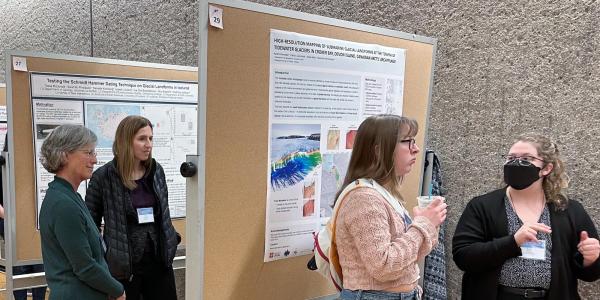Twenty-five students from diverse backgrounds are in SEEC completing the CSDMS Spring School, a week-long coding camp designed to build students’ cyberinfrastructure skills needed in Earth science careers.
The Spring School is part of the annual meeting of the Community Surface Dynamics Modeling System (CSDMS) and is designed to allow participants to make advances on critical earth surface processes research questions by teaching cyberinfrastructure skills.
While field work and lab work get a lot of the glory in portrayals of Earth scientists, it can be programming and modeling that drive forward many Earth surface process research questions. “Earth sciences are a career that can be highly mathematical or computer intensive,” says Spring School founder and CSDMS deputy director Irina Overeem.
“Earth sciences as a discipline relies a lot on numerical modeling, so grad students will encounter some kind of data science problems and they need to foster skills in that area,” says Overeem. “We’re teaching a lot of the programming skills to deal with those types of problems.”
Students were immersed in hands-on training in numerical modeling, programming, open source software development, collaborative coding, version control, high-performance computing, and model uncertainty quantification.
While the CSDMS Spring School is in its third year, this is the first time it has been conducted in person. The first two years occurred online in response to the pandemic.
The cohort of students includes mostly graduate students with some postdoctoral fellows and early career faculty. They are from a number of universities and programs across the United States, with a few from international programs.
A central goal of the Spring School is professional networking: knitting together a cohort of people at the start of their careers who are all interested in Earth surface processes. Team exercises, mixers, and poster sessions are designed to build trust and collaboration between participants.
The students will attend the CSDMS annual meeting following the Spring School, to help them form more ties with the earth surface process modeling community.
“when I am at AGU, I will see a person from the University of Washington talking with a person from Colorado, and they seek each other out because of the connection they made during the workshop,” says Overeem.




